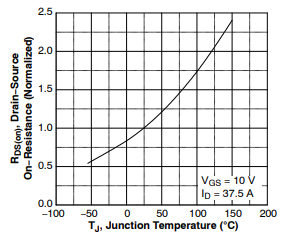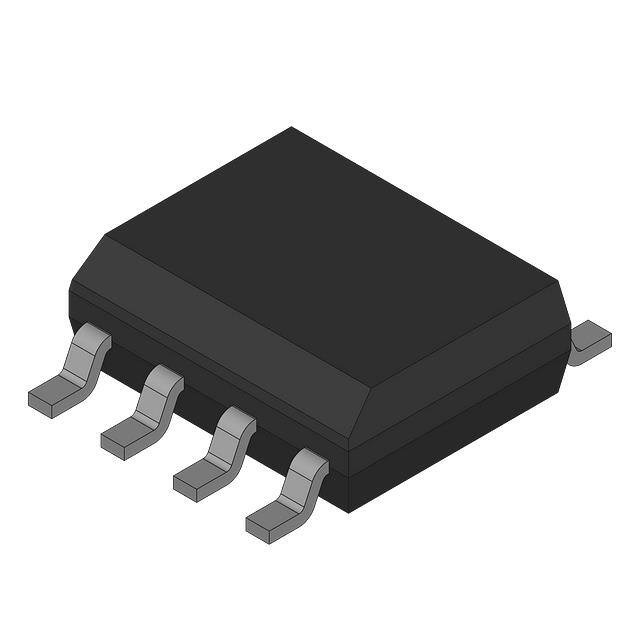SiC MOSFET technology enables AI data centers to achieve a qualitative leap in power conversion efficiency
As data center power consumption increases dramatically, the industry is in urgent need of power semiconductors that can efficiently convert power. This demand growth is partly to reduce operating costs and partly to reduce greenhouse gas emissions to achieve the goal of net zero emissions. In addition, the industry is constantly pursuing lower-cost and smaller power systems.

Everything is stored in the cloud today, but where is the cloud?
The answer is the data center. Our endless demand for pictures, videos and other content is driving the booming data center industry.
The rapid development of the artificial intelligence (AI) industry is leading to a surge in power demand in data centers. It is expected that data center power consumption will more than double in the three years from 2022 to 2025. This not only increases operating costs, but also puts tremendous pressure on the old power infrastructure that has long been overwhelmed, and requires large-scale investment upgrades.
As data center power consumption increases dramatically, the industry is in urgent need of power semiconductors that can efficiently convert power. This demand is driven by both lower operating costs and greenhouse gas emissions to achieve net zero emissions. In addition, the industry is constantly pursuing lower cost and smaller power systems.
Cooling is another major challenge facing data centers. It is estimated that more than 40% of the electricity consumed by most data centers today is used for cooling. In fact, with power efficiency, the energy wasted is mainly lost as heat, which needs to be removed through the data center's air conditioning system. Therefore, the more efficient the power conversion, the less heat is generated, and accordingly, the lower the electricity bill for cooling.
AC-DC Conversion Requirements for Data Centers
Let's take a closer look at the requirements of data center power systems and how component vendors are addressing these challenges. Power density in data centers is accelerating, and power supply unit (PSU) vendors are committed to increasing the power capabilities of a standard 1U rack (Figure 1). About a decade ago, the average power density per rack was about 4 to 5 kW, but today's hyperscale cloud computing companies (such as Amazon, Microsoft, or Facebook) typically require power densities of 20 to 30 kW per rack. Some specialized systems go even further, requiring power densities of more than 100kW per rack.

Figure 1: Power delivery in the data center - from grid to GPU
High power density requires power supplies that are compact and energy efficient, due to limited space for power supply storage and cooling and managing power conversion heat losses.
However, the challenge is not only to improve overall energy efficiency, but also to meet the specific needs of the data center industry. For example, all AI data center PSUs should meet the stringent Open Rack V3 (ORV3) base specification.
Recently, a server rack provider introduced a new AC-DC PSU with a nominal input range of 200 to 277 VAC and an output of 50 VDC, which meets the ORV3 standard. The standard requires a peak efficiency of more than 97.5% at 30% to 100% load conditions and a minimum efficiency of 94% at 10% to 30% load conditions.
Topology Selection for Server Rack Power Supplies
The power factor correction (PFC) stage is a key component of the AC-DC conversion in a PSU and is important for achieving high energy efficiency. The PFC stage is responsible for shaping the input current to maximize the ratio of useful power to total input power. PFC design is also key to meeting electromagnetic compatibility (EMC) standards in regulations such as IEC 61000-3-2 and ensuring compliance with energy efficiency regulations such as ENERGY STAR®.
For many applications, such as data centers, the “totem pole” PFC topology is the best choice for designing the PFC stage. This topology is commonly used for the PFC functional block in 3 kW to 8 kW system power supplies in data centers (Figure 2). Based on MOSFETs, the totem pole PFC stage improves the efficiency and power density of the AC power supply by removing the bulky and lossy bridge rectifier.

Figure 2: Totem Pole PFC Stage
However, to achieve the 97.5% or higher efficiency required by hyperscale data center companies, Totem Pole PFC requires MOSFETs based on “wide bandgap” semiconductor materials such as silicon carbide (SiC). Today, all PFC stages use SiC MOSFETs for the fast switching leg and silicon-based superjunction MOSFETs for the phase or slow leg.
Compared to silicon MOSFETs, SiC MOSFETs offer better performance, higher efficiency, and are more robust, perform better at high temperatures, and can operate at higher switching frequencies.
Compared to silicon-based superjunction MOSFETs, SiC MOSFETs have lower energy stored in the output capacitor (EOSS), which is critical to achieve low load targets because the switching losses in the PFC stage are mainly due to EOSS and devices with relatively high gate charge. Lower EOSS significantly reduces energy losses during switching, thereby improving the efficiency of the fast leg of the Totem Pole PFC. In addition, due to the excellent thermal conductivity of SiC devices, which is three times that of silicon-based devices, SiC MOSFETs have a better positive temperature coefficient RDS(ON) than silicon-based superjunction MOSFETs.
The figure below shows the relationship between the on-resistance of a 650V SiC MOSFET and the junction temperature. (Figure 3) (The on-resistance at a junction temperature of 175°C is 1.5 times higher than the on-resistance at room temperature.)

Figure 3: The relationship between the on-resistance of a 650V SiC MOSFET and the junction temperature
Similarly, the figure below (Figure 4) shows the relationship between the on-resistance of a 650 V superjunction MOSFET and the junction temperature. The on-resistance at a junction temperature of 175°C is more than 2.5 times higher than the on-resistance at room temperature.

Figure 4: 650 V silicon superjunction MOSFET on-resistance vs. junction temperature
Comparing a silicon 650 V superjunction MOSFET with similar RDS(ON) ratings to a 650 V SiC MOSFET, the on-resistance (RDS(ON)) of the former increases to about 50 mohm at a junction temperature (Tj) of 175°C, while the latter has an RDS(ON) of about 30 mohm. During high temperature operation, the 650 V SiC MOSFET has lower conduction losses.
In the Totem Pole PFC slow leg functional block and LLC functional block, conduction losses account for the majority of the total power losses. SiC MOSFETs have lower RDS(ON) at higher junction temperatures, which helps improve system efficiency.
SiC MOSFETs excel in Totem Pole PFC topologies due to their smaller RDS(ON) increase and excellent EOSS at high temperatures, helping to improve efficiency and reduce energy losses.
Conclusion
This article briefly explored the higher standards for efficient power conversion that the growing power demands of hyperscale data centers have put forward. Artificial intelligence is expected to lead the world's transformation. In order to enable our existing power grid to meet the rapid development of AI-driven cloud computing, we urgently need to improve energy efficiency. The use of SiC MOSFETs can significantly improve the energy efficiency of PFC and LLC levels, helping to reduce power consumption and lower operating costs.


